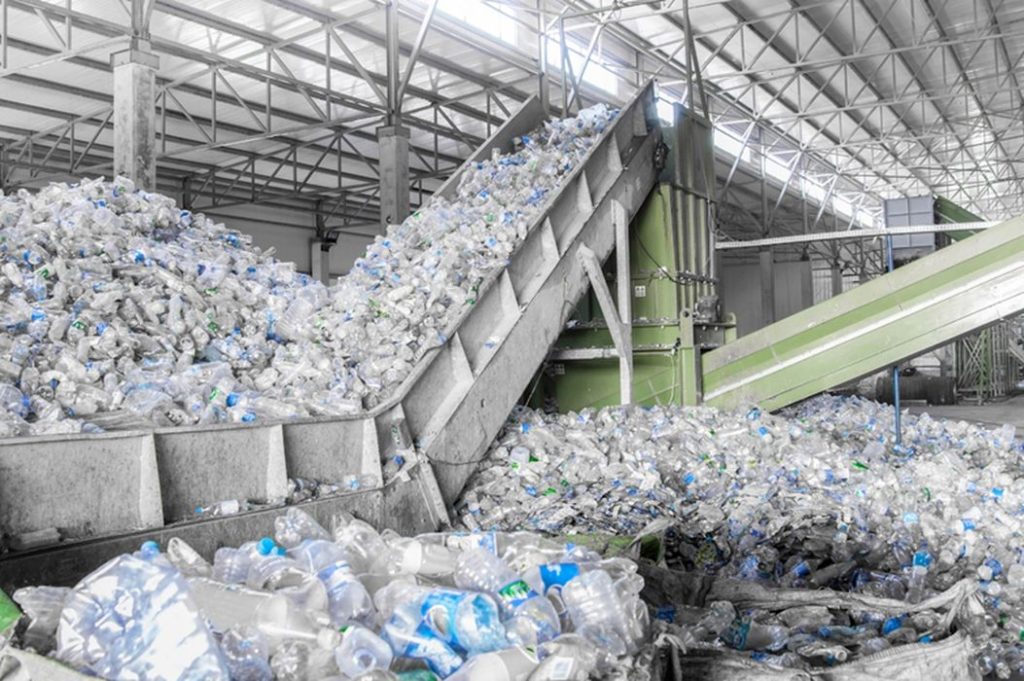
Plastic recycling plant [Source: livescience]
Charles R. Goulding and Joseph Castine examine a new technology for recycling thermoplastics.
Historically the prices of commodity goods have experienced large fluctuations with high peaks and lower valleys.
Currently, the world’s commodity markets are having a substantial peak with the average commodity price up 56.83% over the last 12 months (as of May 2021). Plastics continue to be one of the most demand-driven commodities in this market. Bloomberg reported in March 2021 that HDPE, or High-Density PolyEthylene, which is used for shampoo bottles and shopping bags, has recently posted its highest price since 2008. Because these prices have historically had major fluctuations based on demand ,the commodities recycling markets have also fluctuated greatly.
Recycling in theory is beneficial due to the global effects it can have to reduce emissions and conserve materials; however commodities recycling has in traditional markets been highly influenced by market demand. When the demand is high, recycling is profitable. However, if demand is low or supply is high, the recycling market is not profitable enough for companies to justify expenditures.
As commodity prices are currently at a high, several companies are betting on plastic recycling efforts. Circulate Capital is one of these companies bets that small investments made by well-known corporate backers can aid in tackling the plastic waste issue. In 2019, the company raised a total US$106M fund that was backed by multinational companies including Coca-Cola Co., Danone SA, Procter and Gamble Co., as well as Unilever PLC.
With these investments, Circulate is one of the few investing in the future of companies utilizing circular economies. Circular economies aim to eliminate waste products of industrial processes via reuse, sharing, remanufacturing, and recycling, to name a few.
Along with companies beginning to move toward circular economies, several large companies are investing in recycling startups to propel the effort to recycle more plastics.
One of them is South Korean chemical giant SK Global Chemical Co. who has agreed to buy a 10% stake in Loop for US$56.5M. Loop’s recycling technology is said to remove dyes and other impurities from plastics to allow for materials that are traditionally difficult to recycle. Now, they can now be recycled. These include carpets, clothing, and ocean plastic waste, which can be broken down into PET for use in new bottles and packaging.
Statistically, only 9% of plastics generated within the US are recycled each year. This shockingly low number is due in part to the challenges in infrastructure and chemical processing technology. This new process that Loop has developed can prove vital in the future of the plastics industry, especially during times of high commodity prices. In conjunction with other blossoming chemical recycling techniques commodity prices of plastic goods can be moderated using these recycling methodologies.
The newly developed recycling techniques by Loop could prove vital in future sourcing of 3D printing filament materials. By increasing the ratio of plastics recycled the based materials for these filaments will become more widely available. Any companies engaging in the development and design of new products using 3D printing should consider taking the R&D Tax Credit.
The Research & Development Tax Credit
The now permanent Research and Development (R&D) Tax Credit is available for companies and startups developing new or improved products, processes and/or software.
3D printing can help boost a company’s R&D Tax Credits. Wages for technical employees creating, testing and revising 3D printed prototypes can be included as a percentage of eligible time spent for the R&D Tax Credit. Similarly, when used as a method of improving a process, time spent integrating 3D printing hardware and software counts as an eligible activity. Lastly, when used for modeling and preproduction, the costs of filaments consumed during the development process may also be recovered.
Whether it is used for creating and testing prototypes or for final production, 3D printing is a great indicator that R&D Credit eligible activities are taking place. Companies implementing this technology at any point should consider taking advantage of R&D Tax Credits.
Conclusion
As recycling processes continue to develop worldwide, future prices of these ever-prevalent commodities might be stabilized. Not only could these methodologies decrease the prices of the commodities, they can also help reduce the amount of virgin plastic consumed in 3D printing and traditional plastic applications each year.
